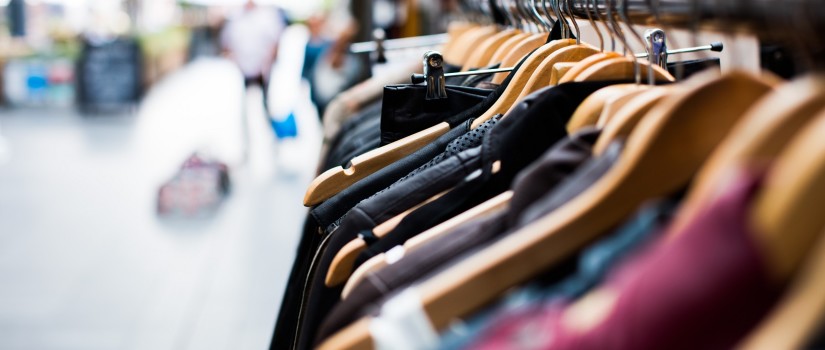
-
Getting deductions for clothing and laundry expenses right
Posted by Team AVS on 22 Dec, 2017 0 CommentsThe ATO allows certain taxpayers to claim a deduction for the cost of buying and cleaning occupation-specific clothing, items of protective wear and for certain unique, and usually distinctive, uniforms.
To claim a deduction it is generally expected that you will be able to provide evidence that you purchased the clothing concerned, and will have diary records or other evidence of your cleaning costs.
If you receive an allowance from your employer for clothing, uniforms, laundry or dry-cleaning, it will be necessary for us to show the amount of this allowance on your tax return.
Occupation-specific clothing
You can claim for clothing that is specific to your occupation and is not every day in nature. Generally, this sort of clothing also allows the public to easily recognise your occupation — such as the checked pants a chef wears.
But the ATO will resist allowing claims made for the cost of purchasing or cleaning clothes you bought to wear for work but that are not specific to your occupation — for example, the black trousers and white shirt generally preferred by waiters or bartenders, or an office worker’s suit and tie.
Protective clothing
You can claim for clothing and footwear that you wear to protect yourself from the risk of illness or injury that may arise from your income-earning activities, or from the environment in which you are required to carry out these activities.
To be considered “protective”, the items must provide a sufficient degree of protection against that risk. Therefore protective clothing includes:
- fire-resistant and sun-protection clothing
- high-visibility vests
- non-slip nurse’s shoes
- rubber boots for concreters
- steel-capped boots, gloves, overalls, and heavy-duty shirts and trousers
- overalls, smocks and aprons you wear to avoid damage or soiling to your ordinary clothes during your income-earning activities.
Ordinary clothes (such as jeans, drill shirts, work shorts, trousers, socks, closed shoes) are not regarded as protective clothing if they lack protective qualities designed for the risks of your work.
The ATO generally disallows claims for the cost of purchasing or cleaning ordinary clothes that you wear for work that may also serve to protect the wearer. For example, you can’t claim for normal, closed shoes, even though by wearing them you will protect your toes and feet.
Work uniforms
Generally, you can make a claim for a uniform (either compulsory or non-compulsory) that is unique and distinctive to the organisation you work for.
Clothing is unique if it has been designed and made specifically for an employer. Clothing is considered distinctive if it has the employer’s logo permanently attached and items are not available to the public.
Claims are generally disallowed that are for the cost of purchasing or cleaning a plain uniform (that is, neither unique nor distinctive).
Compulsory work uniform
A compulsory workwear is a set of clothing that identifies you as an employee of an organisation with a strictly enforced policy that makes it compulsory for you to wear the uniform while you’re at work.
You may also be able to claim a deduction for shoes, socks and stockings where they are an essential part of a distinctive compulsory uniform and where their characteristics (colour, style and type) are specified in your employer’s uniform policy.
You may be able to claim for a single item of distinctive clothing, such as a company shirt or jumper if it’s compulsory for you to wear it at work.
Non-compulsory work uniform
You can’t claim expenses incurred for non-compulsory work uniforms unless your employer has registered the design with AusIndustry. Shoes, socks and stockings can never form part of a non-compulsory work uniform, and neither can a single item such as a jumper.
Cleaning of work clothing
You can claim the costs of washing, drying and ironing eligible work clothes, or having them dry-cleaned. It will be expected however for you to have written evidence, such as diary entries and receipts, for your laundry expenses if both:
- the amount of your claim is greater than $150, and
- your total claim for work-related expenses exceeds $300 (not including car, meal allowance, award transport payments allowance and travel allowance expenses).
If the amount seeking to be claimed is less than the above, and you don’t need to provide written evidence for your laundry expenses, you may use a reasonable basis to work out your claim. For washing, drying and ironing you do yourself, the ATO considers that a reasonable basis for working out your laundry claim is:
- $1 per load (this includes washing, drying and ironing) if the load is made up only of work-related clothing, and
- 50 cents per load if other laundry items are included.
If you choose a different basis to work out your claim, you may be asked to explain that basis to the ATO.
Dry-cleaning expenses
You can claim the cost of dry-cleaning work-related clothing. If your total claim for work-related expenses exceeds $300 (not including car, meal allowance, award transport payments allowance and travel allowance expenses), you must have written evidence to substantiate your claim.
The deductibility of clothing and uniform expenses can be tricky – contact our office if you require assistance.

 AVS BusinessServices @ What the
AVS BusinessServices @ What the
Comments